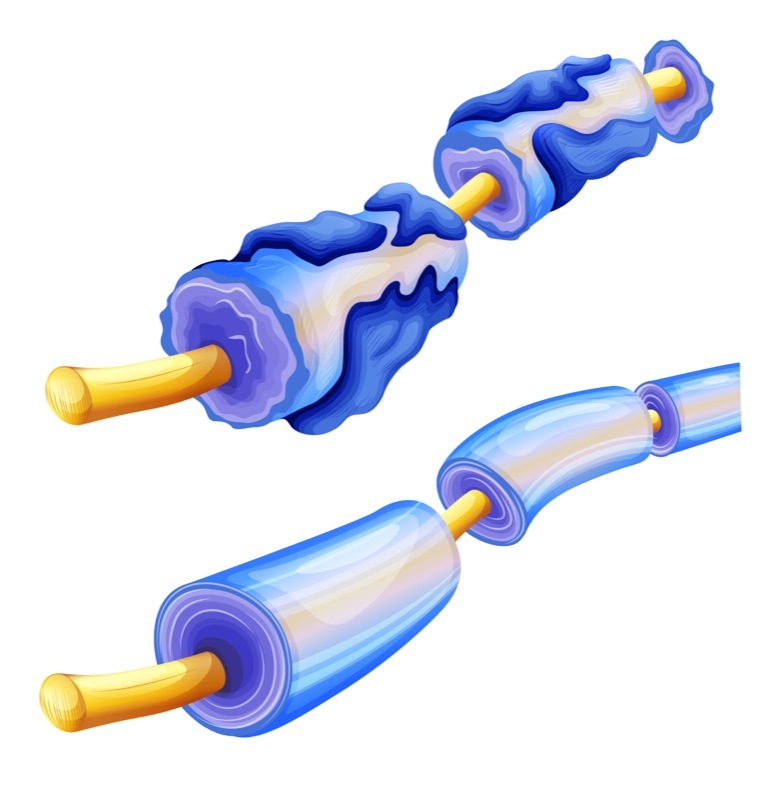New Cell Model Sheds Light on MTMR13 Enzyme’s Role in Myelin Production in CMT4B2
Written by |

A new experimental model of Charcot-Marie-Tooth disease (CMT) type 4B2 sheds light on the role of the MTMR13 enzyme in the abnormal production of myelin known to be involved in this rare disorder, a study reports.
The study, “An In Vitro Model of Charcot-Marie-Tooth Disease Type 4B2 Provides Insight Into the Roles of MTMR13 and MTMR2 in Schwann Cell Myelination,” was published in the journal ASN Neuro.
Charcot-Marie-Tooth disease type 4B, or CMT4B, is an early-onset, severe subtype of CMT caused by genetic mutations affecting the MTMR2, MTMR5, and MTMR13 genes. This disease is characterized by severe nerve cell damage and destruction of the protective myelin sheath, which covers the nerves, as well as by the presence of distinctive myelin outfoldings believed to be due to excessive myelin growth.
Although mouse models for CMT4B2 exist, the underlying mechanism that connects the MTMR13 enzyme with the deregulation of myelin production is not yet clear.
Researchers at Oregon Health & Science University developed an experimental model of CMT4B2 that could assist in the further study of MTMR13’s role.
“Such a model would make feasible the reverse genetic and pharmacological experiments that are needed to clarify the function of the enigmatic MTMR13 [enzyme],” they said.
Mice genetically engineered to lack the MTMR13 gene mimic several of the biological features and clinical presentation of the human disease, including abnormal myelin production.
Researchers collected nerve cells from these mice and developed a specific protocol to grow them and visualize their myelin protective layer in the lab.
The lab-grown cells were found to have significant myelin outfoldings, compared with cells collected from mice that had normal MTMR13 gene levels, similar to those seen in the mouse model for CMT4B2 and patients.
Further analysis of these cell characteristics revealed that, in addition to lacking the MTMR13 enzyme, they also had about 35% fewer MTMR2 enzymes, suggesting that MTMR13 is vital in stabilizing its partner, MTMR2, in myelin-producing cells.
When the team forced the production of functional MTMR2 in cells lacking MTMR13, they were able to only partially reduce abnormal myelin production.
These findings indicate that MTMR13 is likely to have “critical functions other than stabilizing MTMR2” to achieve an adequate level of necessary molecular signals to regulate myelin production, according to the researchers.
“We anticipate that the in vitro model described here will be useful for further investigations of the biochemical and cellular functions of Mtmr13,” they concluded.




